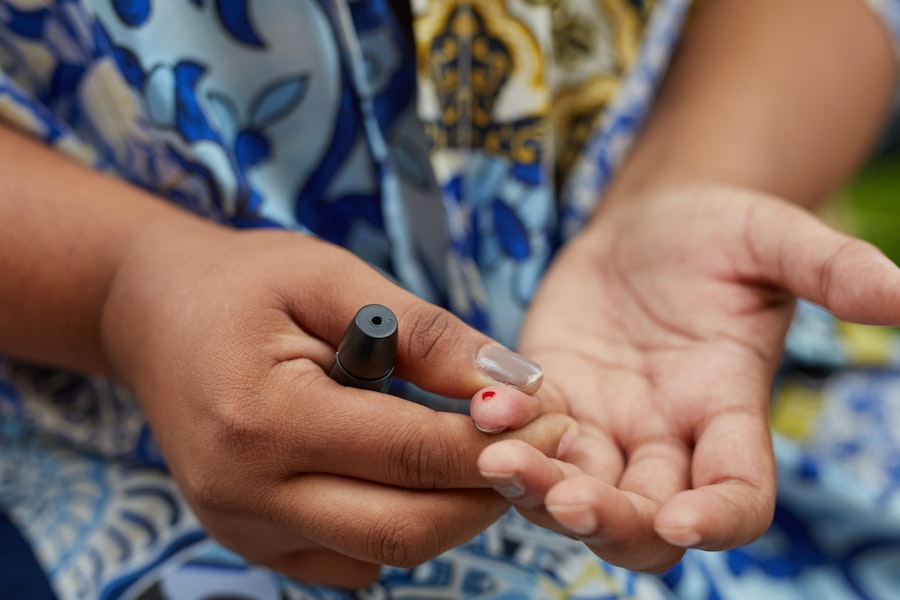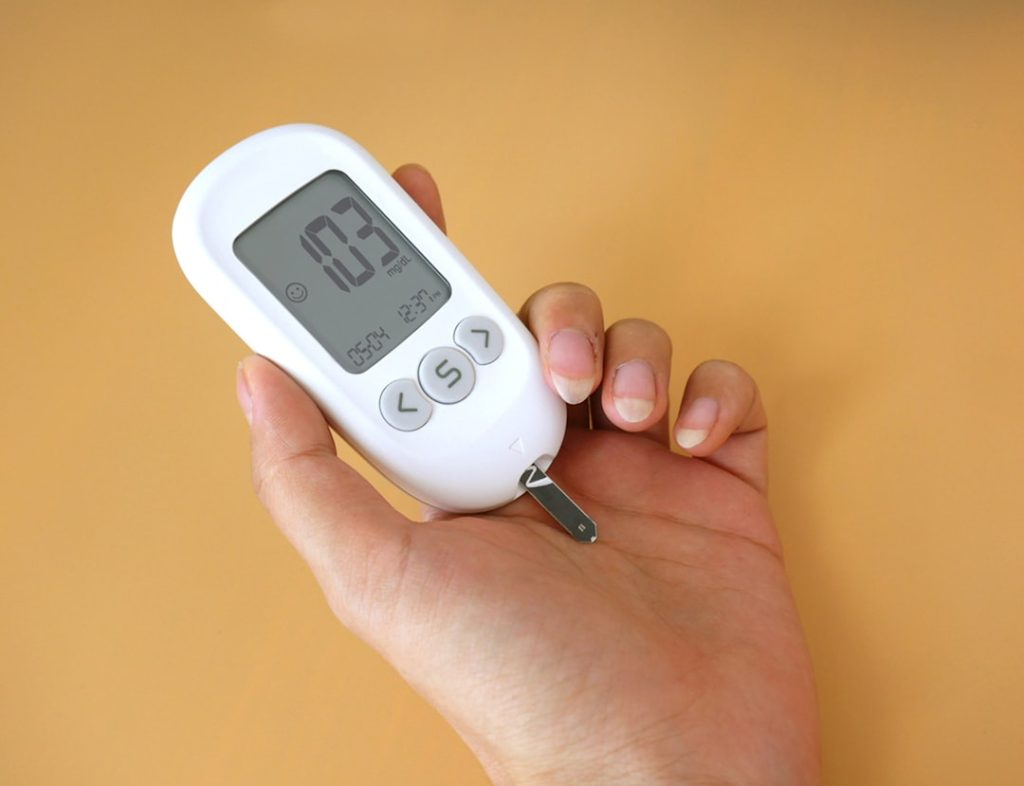A1C, also known as glycated hemoglobin, is a crucial blood test that provides us with a snapshot of our average blood sugar levels over the past two to three months. This test measures the percentage of hemoglobin in our red blood cells that has glucose attached to it. The higher our blood sugar levels have been during this period, the more glucose will bind to hemoglobin, resulting in a higher A1C percentage.
For us, understanding A1C is vital, especially if we are managing diabetes or are at risk for developing the condition. It serves as a key indicator of how well we are controlling our blood sugar levels and can help us make informed decisions about our health. The importance of A1C cannot be overstated.
It not only helps us track our diabetes management but also plays a significant role in predicting potential complications associated with the disease. Elevated A1C levels are linked to an increased risk of serious health issues, such as heart disease, kidney damage, and nerve problems. By keeping our A1C within a target range, we can significantly reduce these risks and improve our overall quality of life.
Therefore, regular monitoring of our A1C levels is essential for maintaining our health and preventing long-term complications.
Understanding the A1C test and how it measures blood sugar levels
The A1C test is a simple blood test that can be performed in a healthcare setting or even at home with a fingerstick device. It provides us with valuable information about our average blood glucose levels over time, which is particularly important for those of us living with diabetes. Unlike daily blood sugar tests that only give us a snapshot of our glucose levels at a specific moment, the A1C test reflects our blood sugar control over a longer period.
This makes it an invaluable tool for assessing how well our diabetes management strategies are working. When we undergo the A1C test, the results are expressed as a percentage. For instance, an A1C level of 7% indicates that approximately 7% of our hemoglobin has glucose attached to it.
This percentage correlates with average blood sugar levels; an A1C of 7% roughly corresponds to an average blood glucose level of about 154 mg/dL. Understanding this relationship helps us grasp the significance of our A1C results and how they relate to our daily blood sugar readings. By interpreting these results correctly, we can better manage our diabetes and make necessary adjustments to our treatment plans.
The significance of A1C in managing diabetes and overall health

For those of us living with diabetes, maintaining an optimal A1C level is crucial for effective disease management. The American Diabetes Association recommends an A1C target of less than 7% for most adults with diabetes, although individual goals may vary based on age, health status, and other factors. Achieving and maintaining this target can help us minimize the risk of complications associated with diabetes, such as cardiovascular disease, neuropathy, and retinopathy.
By focusing on our A1C levels, we can take proactive steps toward better health outcomes. Moreover, the significance of A1C extends beyond diabetes management; it also serves as an indicator of our overall health. Elevated A1C levels can signal underlying issues such as insulin resistance or prediabetes, prompting us to take action before these conditions progress into more serious health problems.
Regularly monitoring our A1C can empower us to make lifestyle changes that promote better health and well-being. By prioritizing our A1C levels, we can enhance not only our diabetes management but also our overall quality of life.
Factors that can affect A1C levels
Several factors can influence our A1C levels, making it essential for us to be aware of them as we manage our health. One significant factor is our diet. The types of foods we consume can have a direct impact on our blood sugar levels and, consequently, our A1C results.
High-carbohydrate meals or sugary snacks can lead to spikes in blood glucose, while a balanced diet rich in whole grains, lean proteins, and healthy fats can help stabilize our levels over time. Another important factor is physical activity. Regular exercise plays a vital role in managing blood sugar levels and improving insulin sensitivity.
When we engage in physical activity, our muscles use glucose for energy, which can help lower our blood sugar levels and contribute to better A1C results. Additionally, stress and illness can also affect our A1C levels. Stress hormones can lead to increased blood sugar production, while illnesses may cause fluctuations in glucose levels due to changes in appetite or activity levels.
By understanding these factors, we can take proactive steps to manage our A1C effectively.
How to interpret A1C results and what the numbers mean
Interpreting A1C results is essential for us to understand where we stand in terms of blood sugar control. Generally, an A1C level below 5.7% is considered normal, while levels between 5.7% and 6.4% indicate prediabetes. An A1C of 6.5% or higher confirms a diagnosis of diabetes.
For those of us already diagnosed with diabetes, the goal is often to maintain an A1C level below 7%, although individual targets may vary based on personal circumstances. When we receive our A1C results, it’s important to consider them in conjunction with other factors such as daily blood sugar readings, symptoms, and overall health status. For instance, if we have an A1C level that is higher than our target but are experiencing low daily blood sugar readings, it may indicate that we need to adjust our treatment plan or lifestyle choices.
Conversely, if our A1C is within the target range but we are experiencing frequent high blood sugar episodes, it may signal the need for further evaluation and adjustments. By interpreting our results holistically, we can make informed decisions about our diabetes management.
Tips for lowering A1C levels through diet and lifestyle changes

Lowering our A1C levels often requires a multifaceted approach that includes dietary modifications and lifestyle changes. One effective strategy is to adopt a balanced diet that emphasizes whole foods while minimizing processed foods high in sugars and unhealthy fats. Incorporating more fruits, vegetables, whole grains, lean proteins, and healthy fats into our meals can help stabilize blood sugar levels and improve overall health.
In addition to dietary changes, regular physical activity is crucial for lowering A1C levels. Engaging in at least 150 minutes of moderate-intensity exercise each week can significantly enhance insulin sensitivity and promote better blood sugar control. Activities such as walking, swimming, cycling, or even dancing can be enjoyable ways to stay active while reaping the benefits for our health.
Furthermore, managing stress through techniques like mindfulness meditation or yoga can also contribute positively to our blood sugar control by reducing stress-induced spikes in glucose levels.
The role of medication and insulin in managing A1C levels
For many of us living with diabetes, lifestyle changes alone may not be sufficient to achieve optimal A1C levels. In such cases, medication or insulin therapy may be necessary components of our treatment plan. Various classes of medications are available to help lower blood sugar levels by improving insulin sensitivity or stimulating insulin production from the pancreas.
Understanding how these medications work can empower us to make informed decisions about our treatment options. Insulin therapy may also be required for those of us with type 1 diabetes or advanced type 2 diabetes when oral medications are no longer effective. Insulin helps regulate blood sugar levels by facilitating the uptake of glucose into cells for energy use or storage.
Working closely with healthcare professionals allows us to determine the most appropriate medication regimen tailored to our individual needs and circumstances. By combining medication with lifestyle changes, we can achieve better control over our A1C levels and overall health.
The importance of regular monitoring and working with healthcare professionals
Regular monitoring of our A1C levels is essential for effective diabetes management and overall health maintenance. We should aim to have our A1C tested at least twice a year if we are meeting treatment goals or quarterly if adjustments are being made to our management plan. This consistent monitoring allows us to track progress over time and make necessary adjustments based on trends in our results.
Collaboration with healthcare professionals is equally important in managing our diabetes effectively. Our healthcare team can provide valuable insights into interpreting A1C results and offer personalized recommendations for lifestyle changes or medication adjustments based on those results. Regular check-ins with doctors, dietitians, or diabetes educators ensure that we stay informed about the latest research and best practices in diabetes management.
By actively engaging with healthcare professionals and prioritizing regular monitoring of our A1C levels, we can take charge of our health and work towards achieving optimal outcomes in managing diabetes.
